Презентация regionalism factors

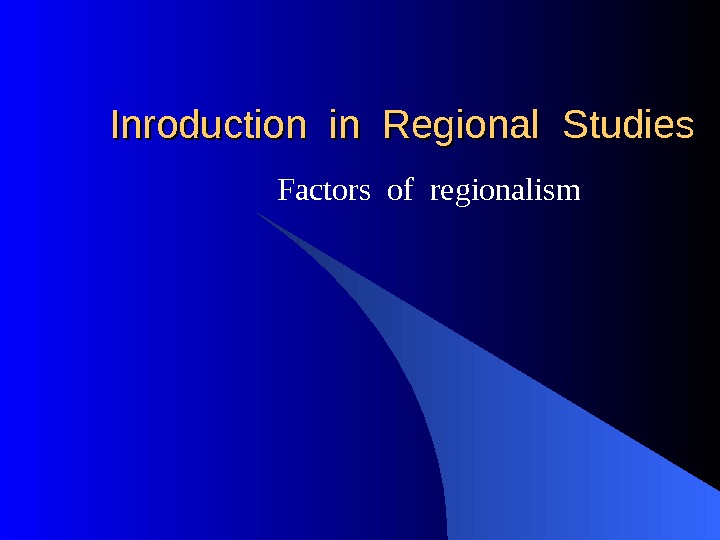
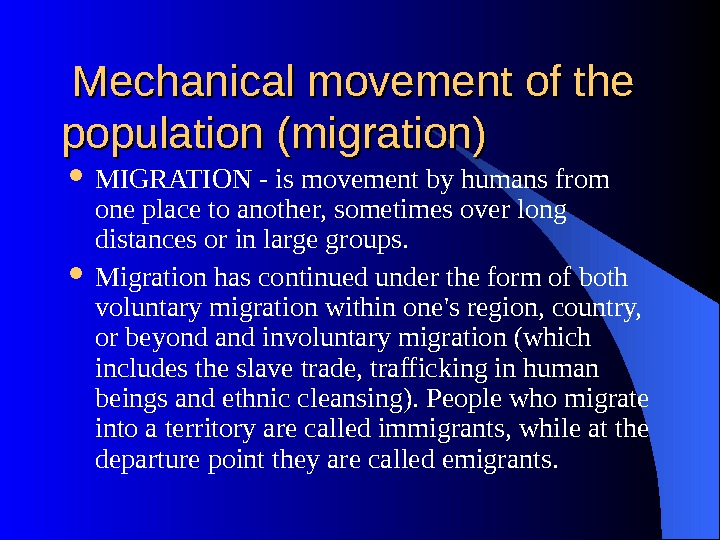
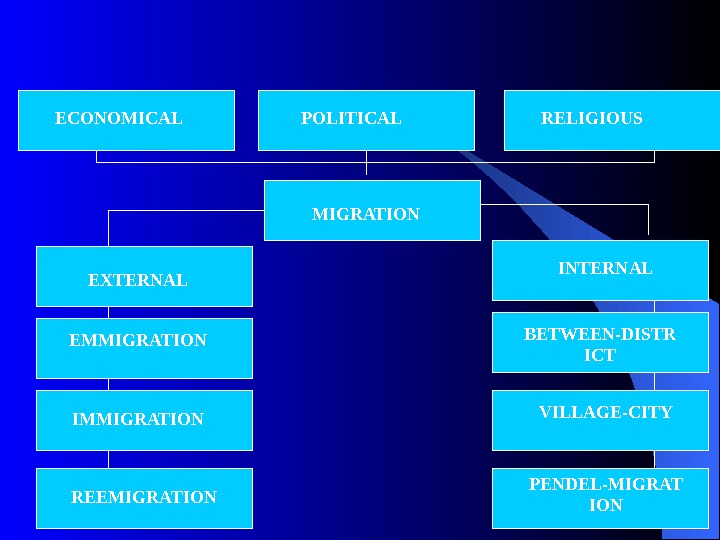
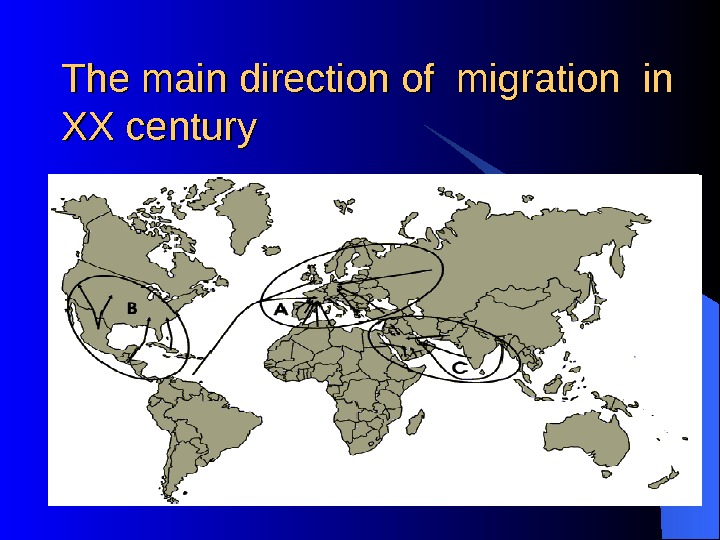
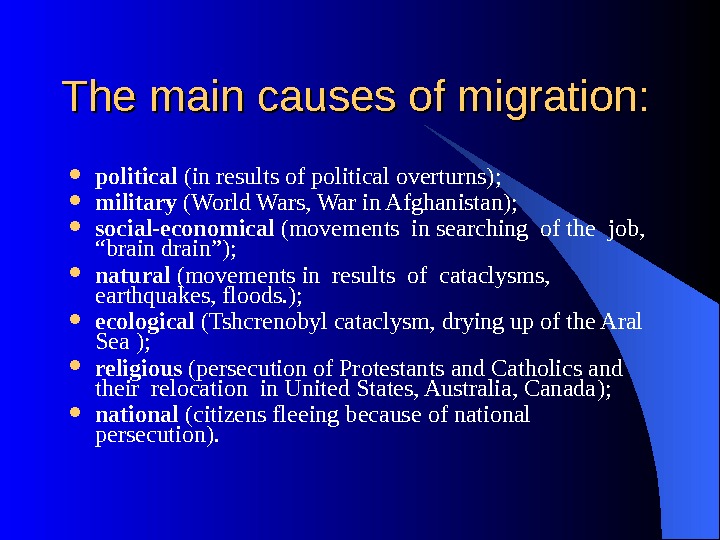
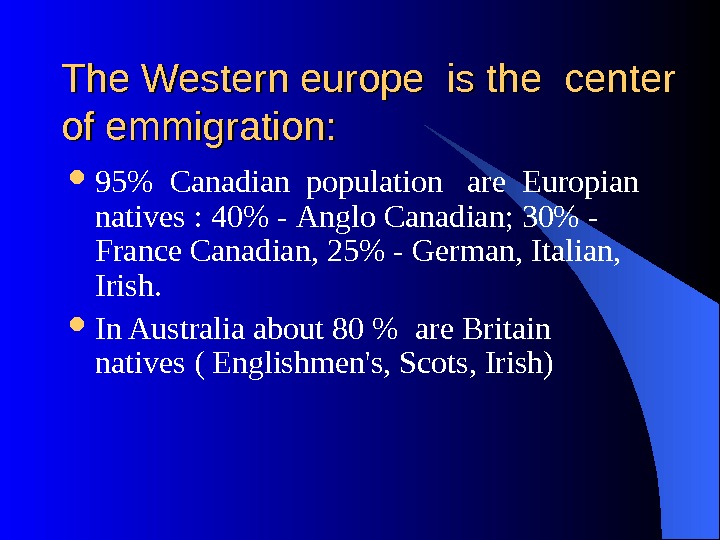
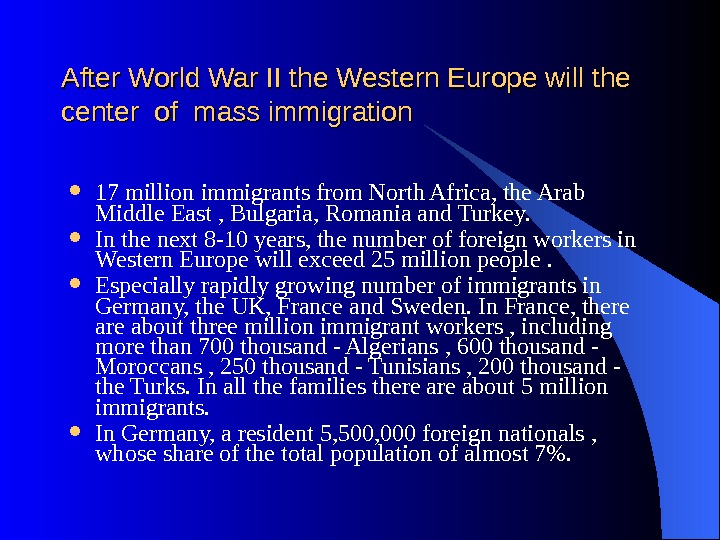
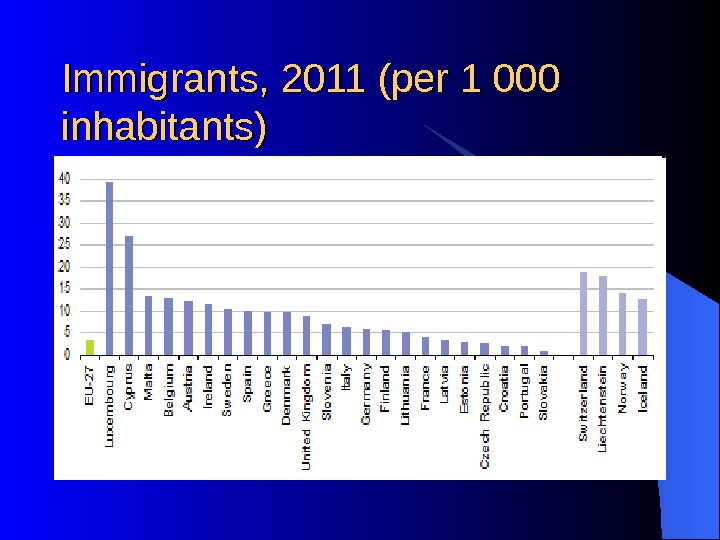

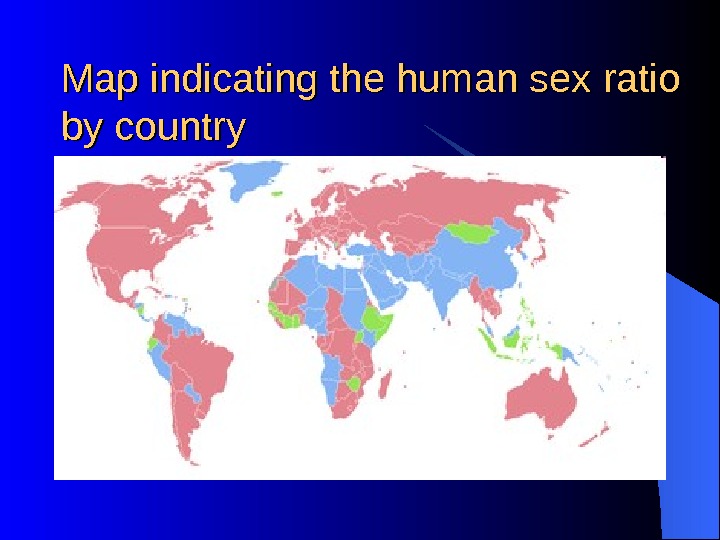
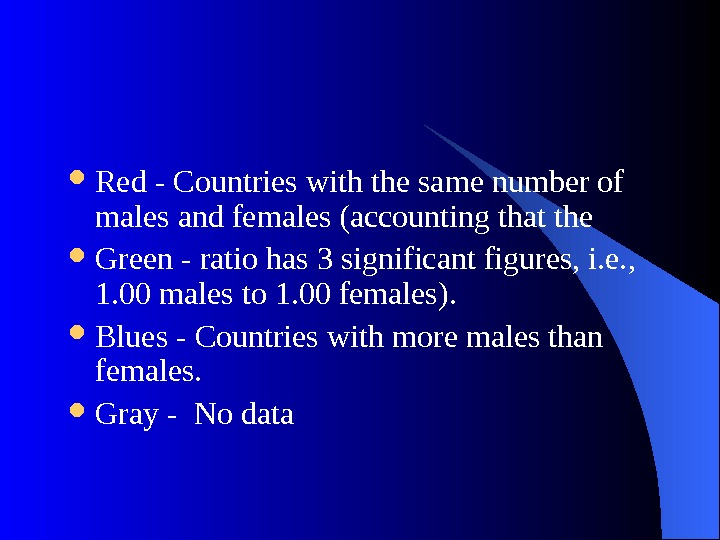
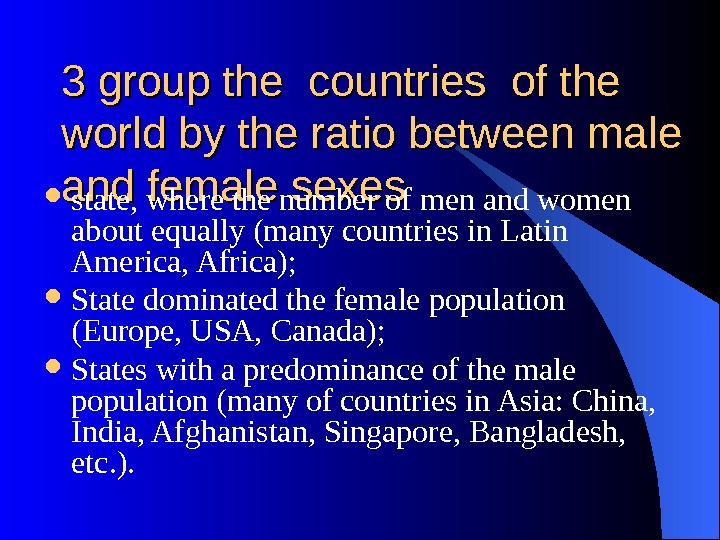
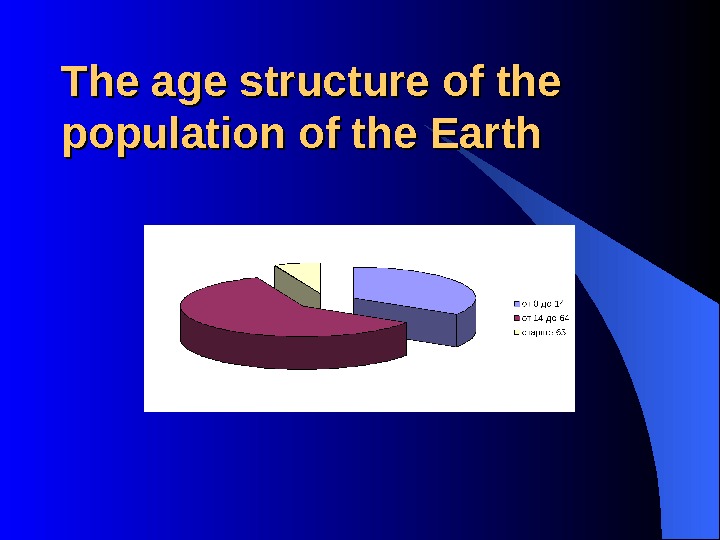
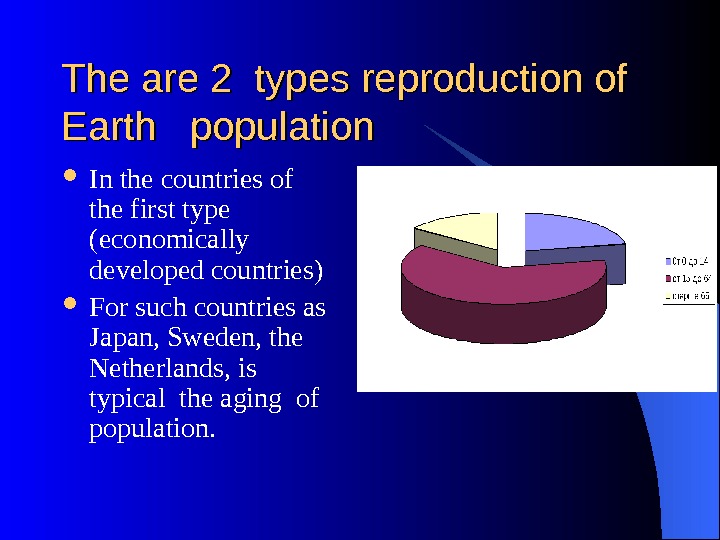
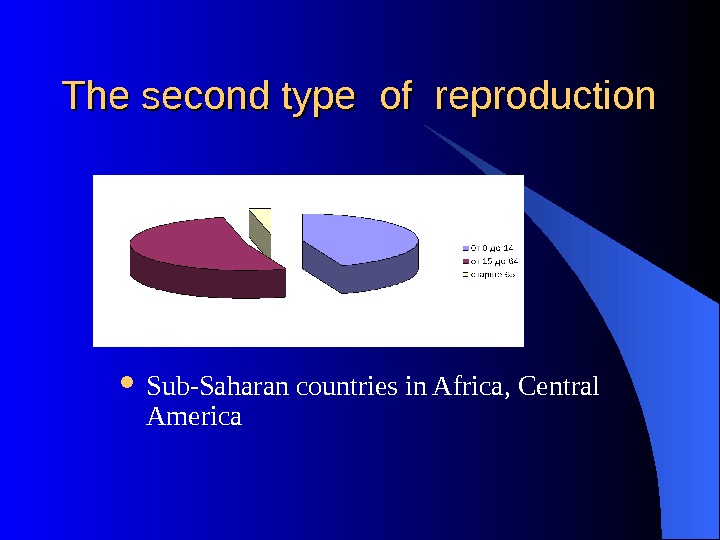
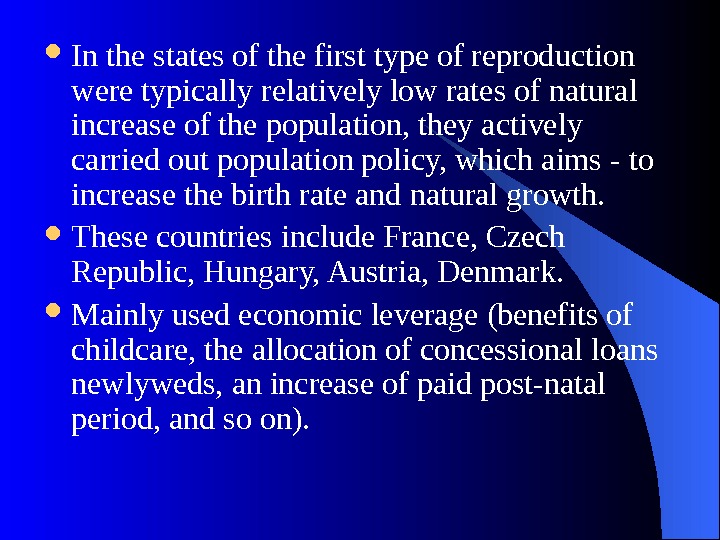
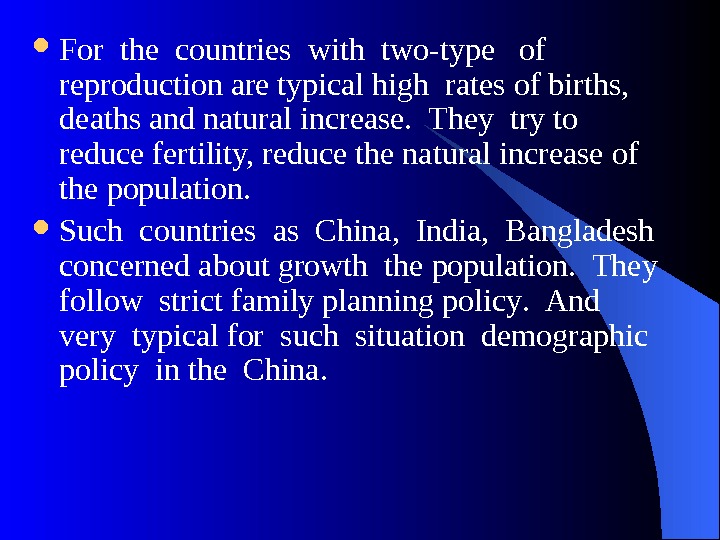
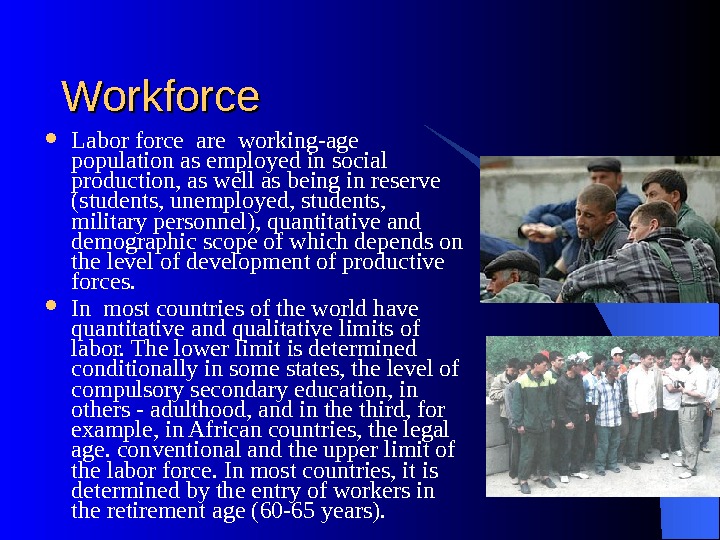
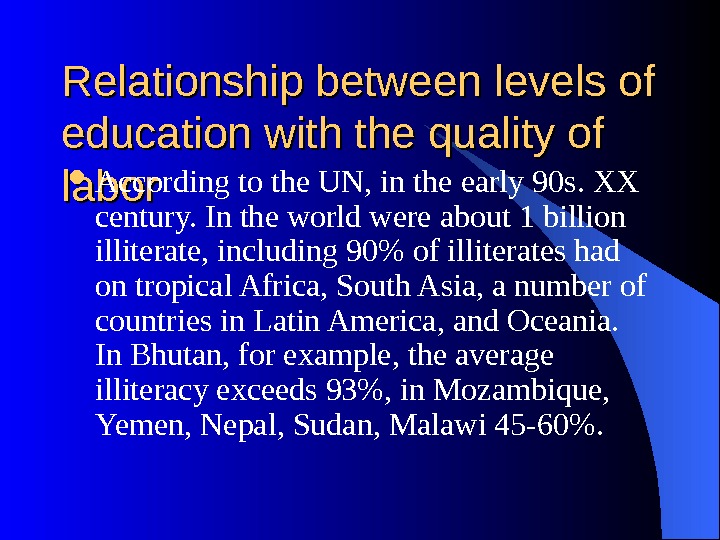
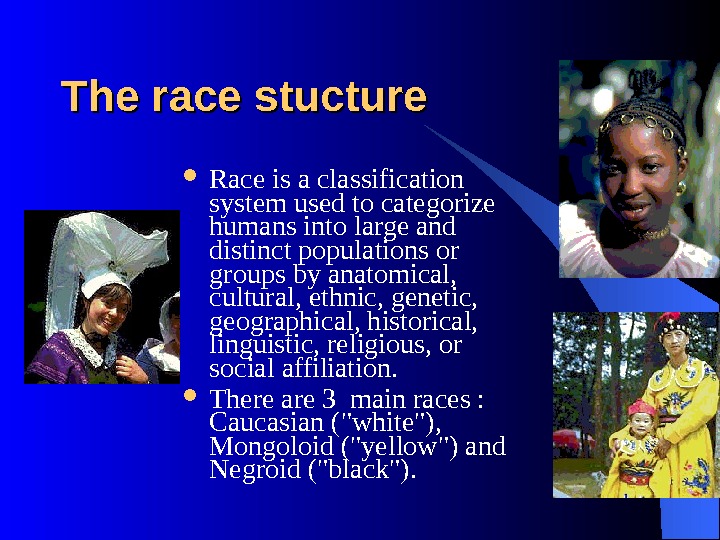

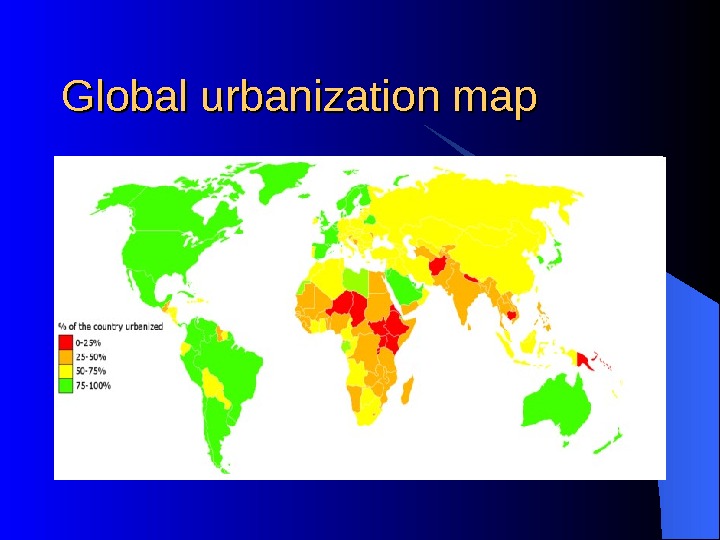
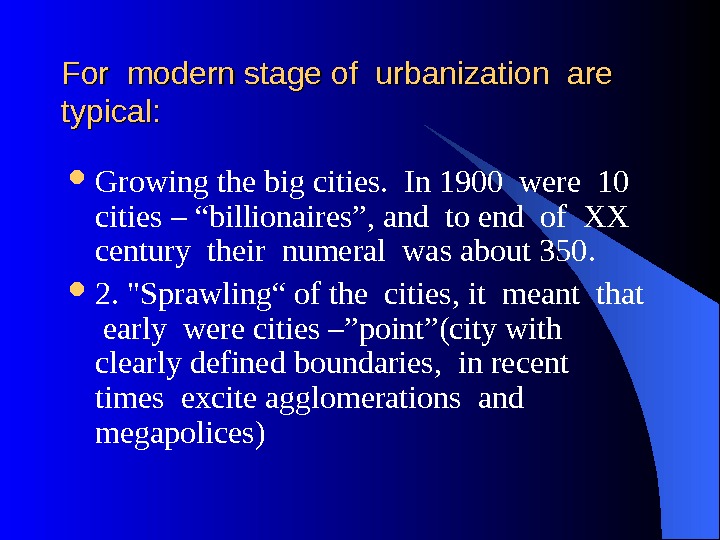
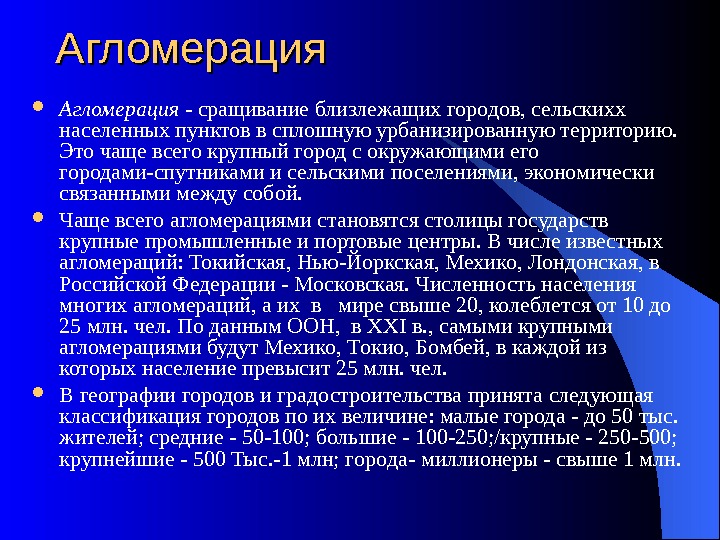
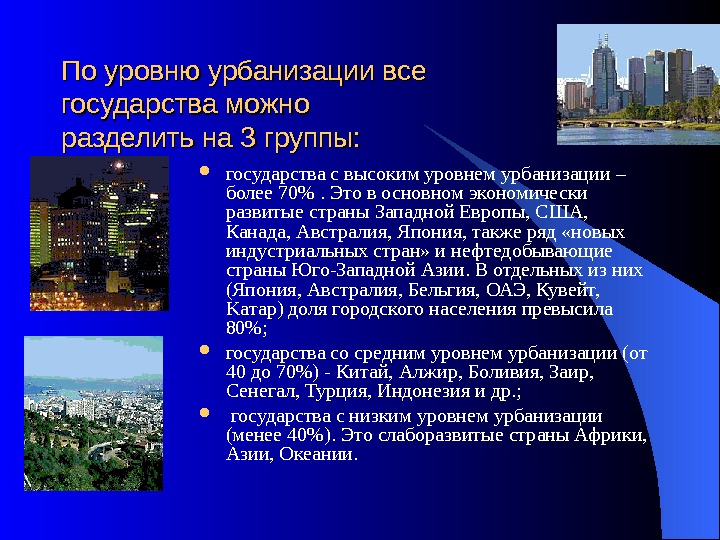
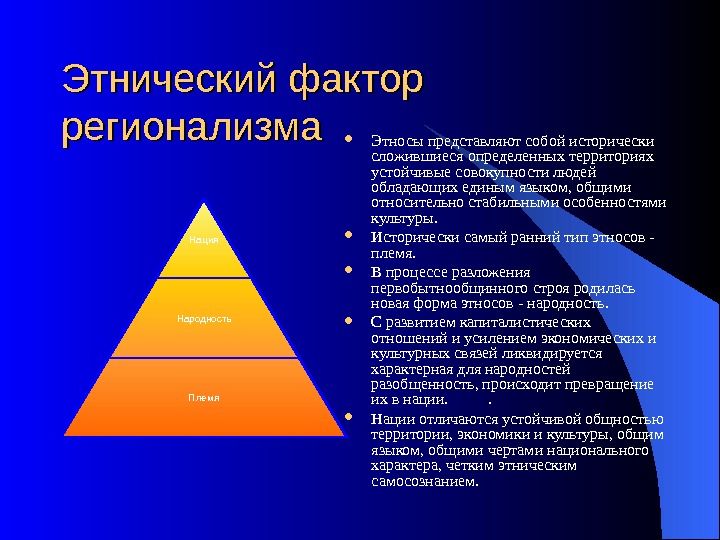
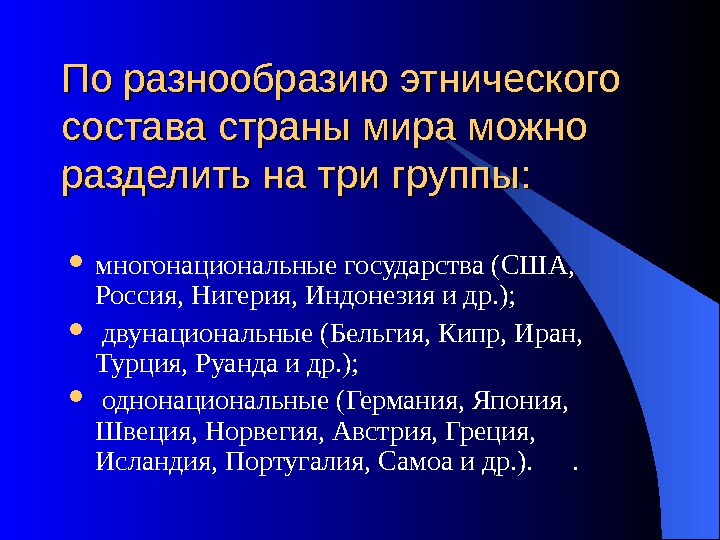
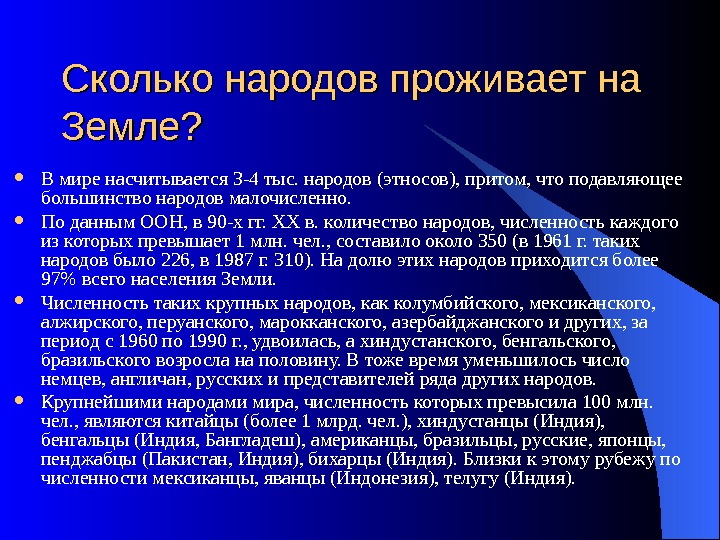


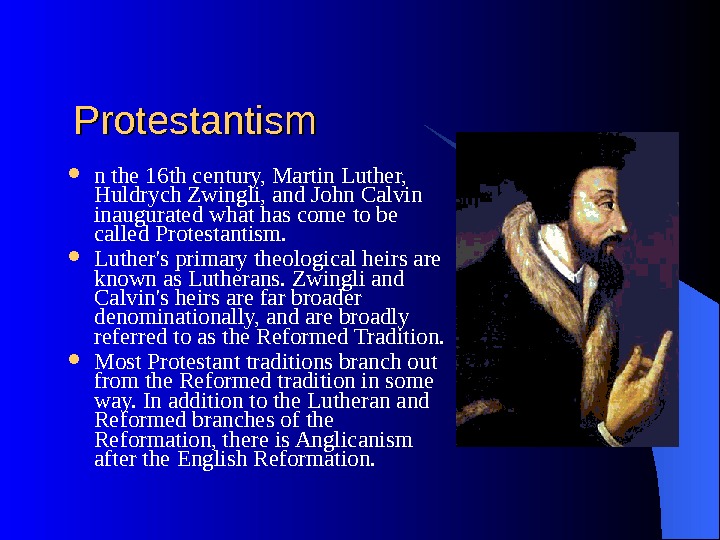
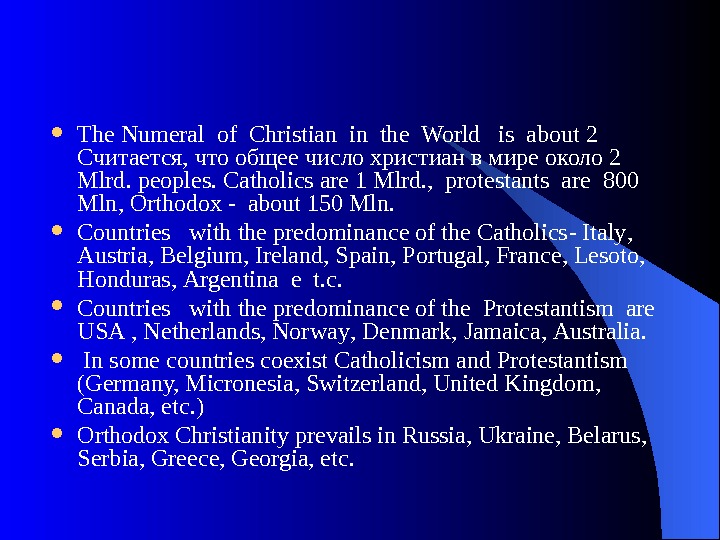
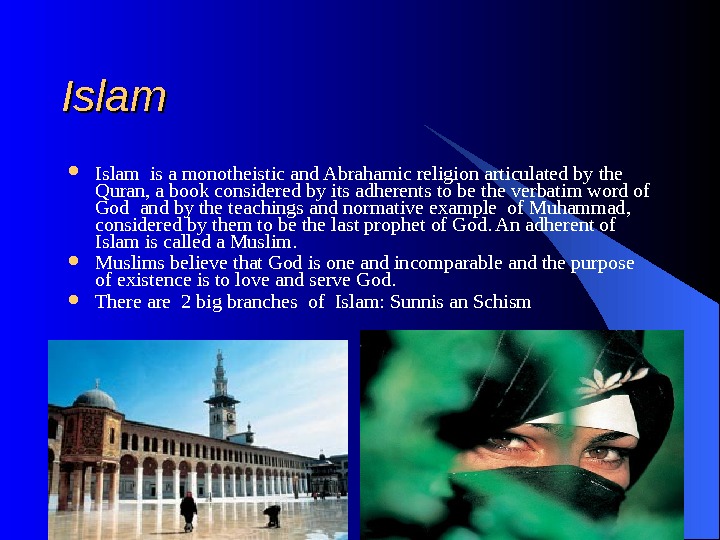
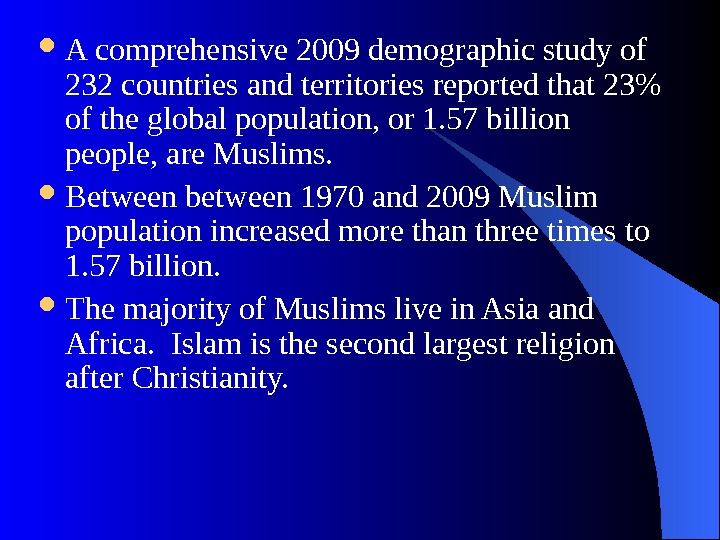
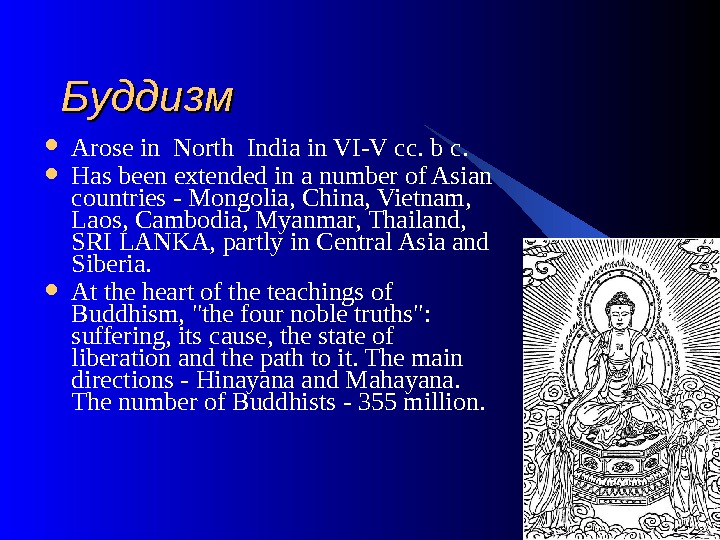


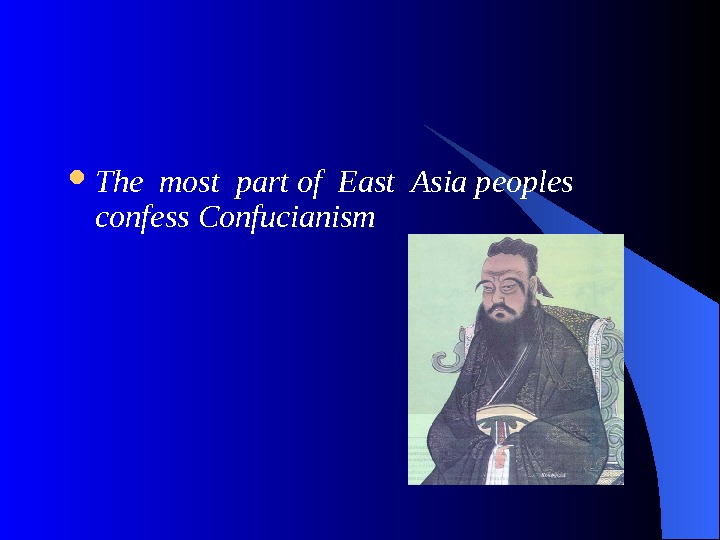
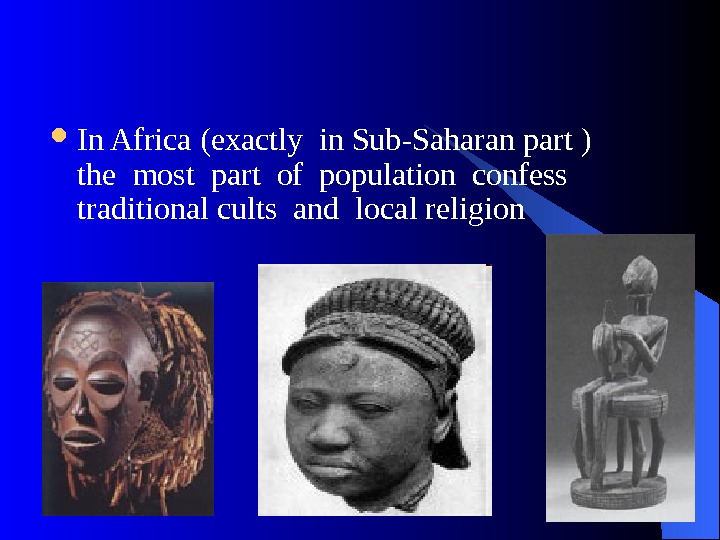
- Размер: 1.8 Mегабайта
- Количество слайдов: 39
Описание презентации Презентация regionalism factors по слайдам
 Inroduction in Regional Studies Factors of regionalism
Inroduction in Regional Studies Factors of regionalism
 Mechanical movement of the population (migration) MIGRATION — is movement by humans from one place to another, sometimes over long distances or in large groups. Migration has continued under the form of both voluntary migration within one’s region, country, or beyond and involuntary migration (which includes the slave trade, trafficking in human beings and ethnic cleansing). People who migrate into a territory are called immigrants, while at the departure point they are called emigrants.
Mechanical movement of the population (migration) MIGRATION — is movement by humans from one place to another, sometimes over long distances or in large groups. Migration has continued under the form of both voluntary migration within one’s region, country, or beyond and involuntary migration (which includes the slave trade, trafficking in human beings and ethnic cleansing). People who migrate into a territory are called immigrants, while at the departure point they are called emigrants.
 ECONOMICAL POLITICAL RELIGIOUS MIGRATION INTERNAL EXTERNAL EMMIGRATION IMMIGRATION REEMIGRATION BETWEEN-DISTR ICT VILLAGE-CITY PENDEL-MIGRAT ION
ECONOMICAL POLITICAL RELIGIOUS MIGRATION INTERNAL EXTERNAL EMMIGRATION IMMIGRATION REEMIGRATION BETWEEN-DISTR ICT VILLAGE-CITY PENDEL-MIGRAT ION
 The main direction of migration in XX century
The main direction of migration in XX century
 The main causes of migration: political ( in results of political overturns) ; military ( World Wars, War in Afghanistan ); social-economical ( movements in searching of the job, “brain drain” ); natural ( movements in results of cataclysms, earthquakes, floods. ); ecological ( Tshcrenobyl cataclysm, drying up of the Aral Sea ); religious ( persecution of Protestants and Catholics and their relocation in United States, Australia, Canada ); national ( citizens fleeing because of national persecution).
The main causes of migration: political ( in results of political overturns) ; military ( World Wars, War in Afghanistan ); social-economical ( movements in searching of the job, “brain drain” ); natural ( movements in results of cataclysms, earthquakes, floods. ); ecological ( Tshcrenobyl cataclysm, drying up of the Aral Sea ); religious ( persecution of Protestants and Catholics and their relocation in United States, Australia, Canada ); national ( citizens fleeing because of national persecution).
 The Western europe is the center of emmigration: 95% Canadian population are Europian natives : 40% — Anglo Canadian ; 30% — France Canadian , 25% — German , Italian , Irish. In Australia about 80 % are Britain natives ( Englishmen’s, Scots, Irish)
The Western europe is the center of emmigration: 95% Canadian population are Europian natives : 40% — Anglo Canadian ; 30% — France Canadian , 25% — German , Italian , Irish. In Australia about 80 % are Britain natives ( Englishmen’s, Scots, Irish)
 After World War II the Western Europe will the center of mass immigration 17 million immigrants from North Africa, the Arab Middle East , Bulgaria, Romania and Turkey. In the next 8 -10 years, the number of foreign workers in Western Europe will exceed 25 million people. Especially rapidly growing number of immigrants in Germany, the UK, France and Sweden. In France, there about three million immigrant workers , including more than 700 thousand — Algerians , 600 thousand — Moroccans , 250 thousand — Tunisians , 200 thousand — the Turks. In all the families there about 5 million immigrants. In Germany, a resident 5, 500, 000 foreign nationals , whose share of the total population of almost 7%.
After World War II the Western Europe will the center of mass immigration 17 million immigrants from North Africa, the Arab Middle East , Bulgaria, Romania and Turkey. In the next 8 -10 years, the number of foreign workers in Western Europe will exceed 25 million people. Especially rapidly growing number of immigrants in Germany, the UK, France and Sweden. In France, there about three million immigrant workers , including more than 700 thousand — Algerians , 600 thousand — Moroccans , 250 thousand — Tunisians , 200 thousand — the Turks. In all the families there about 5 million immigrants. In Germany, a resident 5, 500, 000 foreign nationals , whose share of the total population of almost 7%.
 Immigrants, 2011 (per 1 000 inhabitants)
Immigrants, 2011 (per 1 000 inhabitants)
 The sex composition of the population of the Earth According to the UN, in the XX century. the number of men in the world exceeded the number of women over 20 million people. Basically, this difference given the young ages (per 1, 000 female persons aged 0 -14 years had 1, 040 males of the same age). By the age of 40 -45 years, the number of both sexes in the average earth leveled, and over the age of 60 years, the number of females have been higher.
The sex composition of the population of the Earth According to the UN, in the XX century. the number of men in the world exceeded the number of women over 20 million people. Basically, this difference given the young ages (per 1, 000 female persons aged 0 -14 years had 1, 040 males of the same age). By the age of 40 -45 years, the number of both sexes in the average earth leveled, and over the age of 60 years, the number of females have been higher.
 Map indicating the human sex ratio by country
Map indicating the human sex ratio by country
 Red — Countries with the same number of males and females (accounting that the Green — ratio has 3 significant figures, i. e. , 1. 00 males to 1. 00 females). Blues — Countries with more males than females. Gray — No data
Red — Countries with the same number of males and females (accounting that the Green — ratio has 3 significant figures, i. e. , 1. 00 males to 1. 00 females). Blues — Countries with more males than females. Gray — No data
 3 group the countries of the world by the ratio between male and female sexes state, where the number of men and women about equally (many countries in Latin America, Africa); State dominated the female population (Europe, USA, Canada); States with a predominance of the male population (many of countries in Asia: China, India, Afghanistan, Singapore, Bangladesh, etc. ).
3 group the countries of the world by the ratio between male and female sexes state, where the number of men and women about equally (many countries in Latin America, Africa); State dominated the female population (Europe, USA, Canada); States with a predominance of the male population (many of countries in Asia: China, India, Afghanistan, Singapore, Bangladesh, etc. ).
 The age structure of the population of the Earth
The age structure of the population of the Earth
 The are 2 types reproduction of Earth population In the countries of the first type (economically developed countries) For such countries as Japan, Sweden, the Netherlands, is typical the aging of population.
The are 2 types reproduction of Earth population In the countries of the first type (economically developed countries) For such countries as Japan, Sweden, the Netherlands, is typical the aging of population.
 The second type of reproduction Sub-Saharan countries in Africa, Central America
The second type of reproduction Sub-Saharan countries in Africa, Central America
 In the states of the first type of reproduction were typically relatively low rates of natural increase of the population, they actively carried out population policy, which aims — to increase the birth rate and natural growth. These countries include France, Czech Republic, Hungary, Austria, Denmark. Mainly used economic leverage (benefits of childcare, the allocation of concessional loans newlyweds, an increase of paid post-natal period, and so on).
In the states of the first type of reproduction were typically relatively low rates of natural increase of the population, they actively carried out population policy, which aims — to increase the birth rate and natural growth. These countries include France, Czech Republic, Hungary, Austria, Denmark. Mainly used economic leverage (benefits of childcare, the allocation of concessional loans newlyweds, an increase of paid post-natal period, and so on).
 For the countries with two-type of reproduction are typical high rates of births, deaths and natural increase. They try to reduce fertility, reduce the natural increase of the population. Such countries as China, India, Bangladesh concerned about growth the population. They follow strict family planning policy. And very typical for such situation demographic policy in the China.
For the countries with two-type of reproduction are typical high rates of births, deaths and natural increase. They try to reduce fertility, reduce the natural increase of the population. Such countries as China, India, Bangladesh concerned about growth the population. They follow strict family planning policy. And very typical for such situation demographic policy in the China.
 Labor force are working-age population as employed in social production, as well as being in reserve (students, unemployed, students, military personnel), quantitative and demographic scope of which depends on the level of development of productive forces. In most countries of the world have quantitative and qualitative limits of labor. The lower limit is determined conditionally in some states, the level of compulsory secondary education, in others — adulthood, and in the third, for example, in African countries, the legal age. conventional and the upper limit of the labor force. In most countries, it is determined by the entry of workers in the retirement age (60 -65 years). Workforce
Labor force are working-age population as employed in social production, as well as being in reserve (students, unemployed, students, military personnel), quantitative and demographic scope of which depends on the level of development of productive forces. In most countries of the world have quantitative and qualitative limits of labor. The lower limit is determined conditionally in some states, the level of compulsory secondary education, in others — adulthood, and in the third, for example, in African countries, the legal age. conventional and the upper limit of the labor force. In most countries, it is determined by the entry of workers in the retirement age (60 -65 years). Workforce
 Relationship between levels of education with the quality of labor According to the UN, in the early 90 s. XX century. In the world were about 1 billion illiterate, including 90% of illiterates had on tropical Africa, South Asia, a number of countries in Latin America, and Oceania. In Bhutan, for example, the average illiteracy exceeds 93%, in Mozambique, Yemen, Nepal, Sudan, Malawi 45 -60%.
Relationship between levels of education with the quality of labor According to the UN, in the early 90 s. XX century. In the world were about 1 billion illiterate, including 90% of illiterates had on tropical Africa, South Asia, a number of countries in Latin America, and Oceania. In Bhutan, for example, the average illiteracy exceeds 93%, in Mozambique, Yemen, Nepal, Sudan, Malawi 45 -60%.
 The race stucture Race is a classification system used to categorize humans into large and distinct populations or groups by anatomical, cultural, ethnic, genetic, geographical, historical, linguistic, religious, or social affiliation. There are 3 main races : Caucasian («white»), Mongoloid («yellow») and Negroid («black»).
The race stucture Race is a classification system used to categorize humans into large and distinct populations or groups by anatomical, cultural, ethnic, genetic, geographical, historical, linguistic, religious, or social affiliation. There are 3 main races : Caucasian («white»), Mongoloid («yellow») and Negroid («black»).
 Urbanization (or urbanisation) is the physical growth of urban areas which result in rural migration and even suburban concentration into cities, particularly the very large ones.
Urbanization (or urbanisation) is the physical growth of urban areas which result in rural migration and even suburban concentration into cities, particularly the very large ones.
 Global urbanization map
Global urbanization map
 For modern stage of urbanization are typical: Growing the big cities. In 1900 were 10 cities – “billionaires”, and to end of XX century their numeral was about 350. 2. «Sprawling“ of the cities , it meant that early were cities –”point”(city with clearly defined boundaries, in recent times excite agglomerations and megapolices)
For modern stage of urbanization are typical: Growing the big cities. In 1900 were 10 cities – “billionaires”, and to end of XX century their numeral was about 350. 2. «Sprawling“ of the cities , it meant that early were cities –”point”(city with clearly defined boundaries, in recent times excite agglomerations and megapolices)
 Агломерация — сращивание близлежащих городов, сельских x населенных пунктов в сплошную урбанизированную территорию. Это чаще всего крупный город с окружающими его городами-спутниками и сельскими поселениями, экономически связанными между собой. Чаще всего агломерациями становятся столицы государств крупные промышленные и портовые центры. В числе известных агломераций: Токийская, Нью-Йоркская, Мехико, Лондонская, в Российской Федерации — Московская. Численность населения многих агломераций, а их в мире свыше 20, колеблется от 10 до 25 млн. чел. По данным ООН, в ХХ I в. , самыми крупными агломерациями будут Мехико, T окио, Бомбей, в каждой из которых население превысит 25 млн. чел. В географии городов и градостроительства принята следующая классификация городов по их величине: малые города — до 50 тыс. жителей; средние — 50 -100; большие — 100 -250; /крупные — 250 -500; крупнейшие — 500 Тыс. -1 млн; г opo д a — миллионеры — свыше 1 млн.
Агломерация — сращивание близлежащих городов, сельских x населенных пунктов в сплошную урбанизированную территорию. Это чаще всего крупный город с окружающими его городами-спутниками и сельскими поселениями, экономически связанными между собой. Чаще всего агломерациями становятся столицы государств крупные промышленные и портовые центры. В числе известных агломераций: Токийская, Нью-Йоркская, Мехико, Лондонская, в Российской Федерации — Московская. Численность населения многих агломераций, а их в мире свыше 20, колеблется от 10 до 25 млн. чел. По данным ООН, в ХХ I в. , самыми крупными агломерациями будут Мехико, T окио, Бомбей, в каждой из которых население превысит 25 млн. чел. В географии городов и градостроительства принята следующая классификация городов по их величине: малые города — до 50 тыс. жителей; средние — 50 -100; большие — 100 -250; /крупные — 250 -500; крупнейшие — 500 Тыс. -1 млн; г opo д a — миллионеры — свыше 1 млн.
 По уровню урбанизации все государства можно разделить на 3 группы: государства с высоким уровнем урбанизации – более 70%. Это в основном экономически развитые страны Западной Европы, США, Канада, Австралия, Япония, также ряд «новых индустриальных стран» и нефтедобывающие страны Юго-Западной Азии. В отдельных из них (Япония, Австралия, Бельгия, ОАЭ, Кувейт, Ka т ap ) доля городского населения превысила 80%; государства со средним уровнем урбанизации (от 40 до 70%) — Китай, Алжир, Боливия, Заир, Сенегал, Турция, Индонезия и др. ; государства с низким уровнем урбанизации (менее 40%). Это слаборазвитые страны Африки, Азии, Океании.
По уровню урбанизации все государства можно разделить на 3 группы: государства с высоким уровнем урбанизации – более 70%. Это в основном экономически развитые страны Западной Европы, США, Канада, Австралия, Япония, также ряд «новых индустриальных стран» и нефтедобывающие страны Юго-Западной Азии. В отдельных из них (Япония, Австралия, Бельгия, ОАЭ, Кувейт, Ka т ap ) доля городского населения превысила 80%; государства со средним уровнем урбанизации (от 40 до 70%) — Китай, Алжир, Боливия, Заир, Сенегал, Турция, Индонезия и др. ; государства с низким уровнем урбанизации (менее 40%). Это слаборазвитые страны Африки, Азии, Океании.
 Этнический фактор регионализма Этносы представляют собой исторически сложившиеся определенных территориях устойчивые совокупности людей обладающих единым языком, общими относительно стабильными особенностями культуры. Исторически самый ранний тип этносов — племя. В процессе разложения первобытнообщинного строя родилась новая форма этносов — народность. С развитием капиталистических отношений и усилением экономических и культурных связей ликвидируется характерная для народностей разобщенность, происходит превращение их в нации. . Нации отличаются устойчивой общностью территории, экономики и культуры, общим языком, общими чертами национального характера, четким этническим самосознанием. Нация Народность Племя
Этнический фактор регионализма Этносы представляют собой исторически сложившиеся определенных территориях устойчивые совокупности людей обладающих единым языком, общими относительно стабильными особенностями культуры. Исторически самый ранний тип этносов — племя. В процессе разложения первобытнообщинного строя родилась новая форма этносов — народность. С развитием капиталистических отношений и усилением экономических и культурных связей ликвидируется характерная для народностей разобщенность, происходит превращение их в нации. . Нации отличаются устойчивой общностью территории, экономики и культуры, общим языком, общими чертами национального характера, четким этническим самосознанием. Нация Народность Племя
 По разнообразию этнического состава страны мира можно разделить на три группы: многонациональные государства (США, Россия, Нигерия, Индонезия и др. ); двунациональные (Бельгия, Кипр, Иран, Турция, Руанда и др. ); однонациональные (Германия, Япония, Швеция, Норвегия, Австрия, Греция, Исландия, Португалия, Самоа и др. ). .
По разнообразию этнического состава страны мира можно разделить на три группы: многонациональные государства (США, Россия, Нигерия, Индонезия и др. ); двунациональные (Бельгия, Кипр, Иран, Турция, Руанда и др. ); однонациональные (Германия, Япония, Швеция, Норвегия, Австрия, Греция, Исландия, Португалия, Самоа и др. ). .
 Сколько народов проживает на Земле? В мире насчитывается 3 -4 тыс. народов (этносов), притом, что подавляющее большинство народов малочисленно. По данным ООН, в 90 -х гг. ХХ в. количество народов, чис ленность каждого из которых превышает 1 млн. чел. , составило около 350 (в 1961 г. таких народов было 226, в 1987 г. 310). На долю этих народов приходится более 97% всего населения Земли. Численность таких крупных народов, как колумбийского, мексиканского, алжирского, перуанского, марокканского, азербайджанского и других, за период с 1960 по 1990 г. , удвоилась, а хиндустанского, бенгальского, бразильского возросла на половину. В тоже время уменьшилось число немцев, англичан, русских и представителей ряда других народов. Крупнейшими народами мира, численность которых превысила 100 млн. чел. , являются китайцы (более 1 млрд. чел. ), хиндустанцы (Индия), бенгальцы (Индия, Бангладеш), американ цы, бразильцы, русские, японцы, пенджабцы (Пакистан, Индия), бихарцы (Индия). Близки к этому рубежу по численности мексиканцы, яванцы (Индонезия), телугу (Индия).
Сколько народов проживает на Земле? В мире насчитывается 3 -4 тыс. народов (этносов), притом, что подавляющее большинство народов малочисленно. По данным ООН, в 90 -х гг. ХХ в. количество народов, чис ленность каждого из которых превышает 1 млн. чел. , составило около 350 (в 1961 г. таких народов было 226, в 1987 г. 310). На долю этих народов приходится более 97% всего населения Земли. Численность таких крупных народов, как колумбийского, мексиканского, алжирского, перуанского, марокканского, азербайджанского и других, за период с 1960 по 1990 г. , удвоилась, а хиндустанского, бенгальского, бразильского возросла на половину. В тоже время уменьшилось число немцев, англичан, русских и представителей ряда других народов. Крупнейшими народами мира, численность которых превысила 100 млн. чел. , являются китайцы (более 1 млрд. чел. ), хиндустанцы (Индия), бенгальцы (Индия, Бангладеш), американ цы, бразильцы, русские, японцы, пенджабцы (Пакистан, Индия), бихарцы (Индия). Близки к этому рубежу по численности мексиканцы, яванцы (Индонезия), телугу (Индия).
 Confessional factor of regionalism: To world religion concern Christianity, Islam and Buddhism, but to local (national) – Hinduism ( India ), Judaism ( Israel ), Shinto ( Japan ), Confucianism ( China ).
Confessional factor of regionalism: To world religion concern Christianity, Islam and Buddhism, but to local (national) – Hinduism ( India ), Judaism ( Israel ), Shinto ( Japan ), Confucianism ( China ).
 Christianity arose in the early 1000 in the east of the Roman Empire, in South- West Asia. In 1054 , this religion was split into two branches: the Eastern ( Greek Orthodox ) and Western ( Roman Catholic ). These varied features of worship and organization. Thus , the Orthodox have independent ( autocephalous ) national church — a total of 15 (Moscow , Constantinople , Alexandria , Georgia , Jerusalem , etc. ). The organization of the Catholic Church is characterized by a slender centralization. It is headed by the pope , who resides in the Vatican
Christianity arose in the early 1000 in the east of the Roman Empire, in South- West Asia. In 1054 , this religion was split into two branches: the Eastern ( Greek Orthodox ) and Western ( Roman Catholic ). These varied features of worship and organization. Thus , the Orthodox have independent ( autocephalous ) national church — a total of 15 (Moscow , Constantinople , Alexandria , Georgia , Jerusalem , etc. ). The organization of the Catholic Church is characterized by a slender centralization. It is headed by the pope , who resides in the Vatican
 Protestantism n the 16 th century, Martin Luther, Huldrych Zwingli, and John Calvin inaugurated what has come to be called Protestantism. Luther’s primary theological heirs are known as Lutherans. Zwingli and Calvin’s heirs are far broader denominationally, and are broadly referred to as the Reformed Tradition. Most Protestant traditions branch out from the Reformed tradition in some way. In addition to the Lutheran and Reformed branches of the Reformation, there is Anglicanism after the English Reformation.
Protestantism n the 16 th century, Martin Luther, Huldrych Zwingli, and John Calvin inaugurated what has come to be called Protestantism. Luther’s primary theological heirs are known as Lutherans. Zwingli and Calvin’s heirs are far broader denominationally, and are broadly referred to as the Reformed Tradition. Most Protestant traditions branch out from the Reformed tradition in some way. In addition to the Lutheran and Reformed branches of the Reformation, there is Anglicanism after the English Reformation.
 The Numeral of Christian in the World is about 2 Считается, что общее число христиан в мире около 2 Mlrd. peoples. Catholics are 1 Mlrd. , protestants are 800 Mln, Orthodox — about 150 Mln. Countries with the predominance of the Catholics — Italy , Austria , Belgium , Ireland , Spain , Portugal , France , Lesoto , Honduras , Argentina e t. c. Countries with the predominance of the Protestantism are USA , Netherlands , Norway , Denmark , Jamaica , Australia. In some countries coexist Catholicism and Protestantism (Germany, Micronesia, Switzerland, United Kingdom, Canada, etc. ) Orthodox Christianity prevails in Russia, Ukraine, Belarus, Serbia, Greece, Georgia, etc.
The Numeral of Christian in the World is about 2 Считается, что общее число христиан в мире около 2 Mlrd. peoples. Catholics are 1 Mlrd. , protestants are 800 Mln, Orthodox — about 150 Mln. Countries with the predominance of the Catholics — Italy , Austria , Belgium , Ireland , Spain , Portugal , France , Lesoto , Honduras , Argentina e t. c. Countries with the predominance of the Protestantism are USA , Netherlands , Norway , Denmark , Jamaica , Australia. In some countries coexist Catholicism and Protestantism (Germany, Micronesia, Switzerland, United Kingdom, Canada, etc. ) Orthodox Christianity prevails in Russia, Ukraine, Belarus, Serbia, Greece, Georgia, etc.
 Islam is a monotheistic and Abrahamic religion articulated by the Quran, a book considered by its adherents to be the verbatim word of God and by the teachings and normative example of Muhammad, considered by them to be the last prophet of God. An adherent of Islam is called a Muslims believe that God is one and incomparable and the purpose of existence is to love and serve God. There are 2 big branches of Islam: Sunnis an Schism
Islam is a monotheistic and Abrahamic religion articulated by the Quran, a book considered by its adherents to be the verbatim word of God and by the teachings and normative example of Muhammad, considered by them to be the last prophet of God. An adherent of Islam is called a Muslims believe that God is one and incomparable and the purpose of existence is to love and serve God. There are 2 big branches of Islam: Sunnis an Schism
 A comprehensive 2009 demographic study of 232 countries and territories reported that 23% of the global population, or 1. 57 billion people, are Muslims. Between between 1970 and 2009 Muslim population increased more than three times to 1. 57 billion. The majority of Muslims live in Asia and Africa. Islam is the second largest religion after Christianity.
A comprehensive 2009 demographic study of 232 countries and territories reported that 23% of the global population, or 1. 57 billion people, are Muslims. Between between 1970 and 2009 Muslim population increased more than three times to 1. 57 billion. The majority of Muslims live in Asia and Africa. Islam is the second largest religion after Christianity.
 Буддизм Arose in North India in VI — V cc. b c. Has been extended in a number of Asian countries — Mongolia, China, Vietnam, Laos, Cambodia, Myanmar, Thailand, SRI LANKA, partly in Central Asia and Siberia. At the heart of the teachings of Buddhism, «the four noble truths»: suffering, its cause, the state of liberation and the path to it. The main directions — Hinayana and Mahayana. The number of Buddhists — 355 million.
Буддизм Arose in North India in VI — V cc. b c. Has been extended in a number of Asian countries — Mongolia, China, Vietnam, Laos, Cambodia, Myanmar, Thailand, SRI LANKA, partly in Central Asia and Siberia. At the heart of the teachings of Buddhism, «the four noble truths»: suffering, its cause, the state of liberation and the path to it. The main directions — Hinayana and Mahayana. The number of Buddhists — 355 million.
 Hinduism Was born on base ancient Brahmanism religion ( transformation was about sec. half 1000 Ch. B. ). Hindus believe that the world is governed by three main god: the god Vishnu, the guardian, the destroyer god Shiva, the creator-god Brahma. Hindus are 83% of India’s population, ie about 850 million people.
Hinduism Was born on base ancient Brahmanism religion ( transformation was about sec. half 1000 Ch. B. ). Hindus believe that the world is governed by three main god: the god Vishnu, the guardian, the destroyer god Shiva, the creator-god Brahma. Hindus are 83% of India’s population, ie about 850 million people.
 Shinto is national Religion of Japan ( Number the believer about 100 Billion peoples ).
Shinto is national Religion of Japan ( Number the believer about 100 Billion peoples ).
 The most part of East Asia peoples confess Confucianism
The most part of East Asia peoples confess Confucianism
 In Africa ( exactly in Sub-Saharan part ) the most part of population confess traditional cults and local religion
In Africa ( exactly in Sub-Saharan part ) the most part of population confess traditional cults and local religion

